John Wayne Gacy, infamously known as the “Killer Clown,” was one of America’s most notorious serial killers. Disguised as “Pogo the Clown Killer,” Gacy preyed on young men and boys during the 1970s, committing horrifying crimes that shocked the nation. His seemingly ordinary life masked a dark, sinister side, making his story both terrifying and tragic. In this article, we delve into the chilling details of Gacy’s double life and the lasting impact of his gruesome deeds.
Table of Contents
A Mother’s Burden & The Abusive Father: Marion Elaine Robinson & John Stanley Gacy
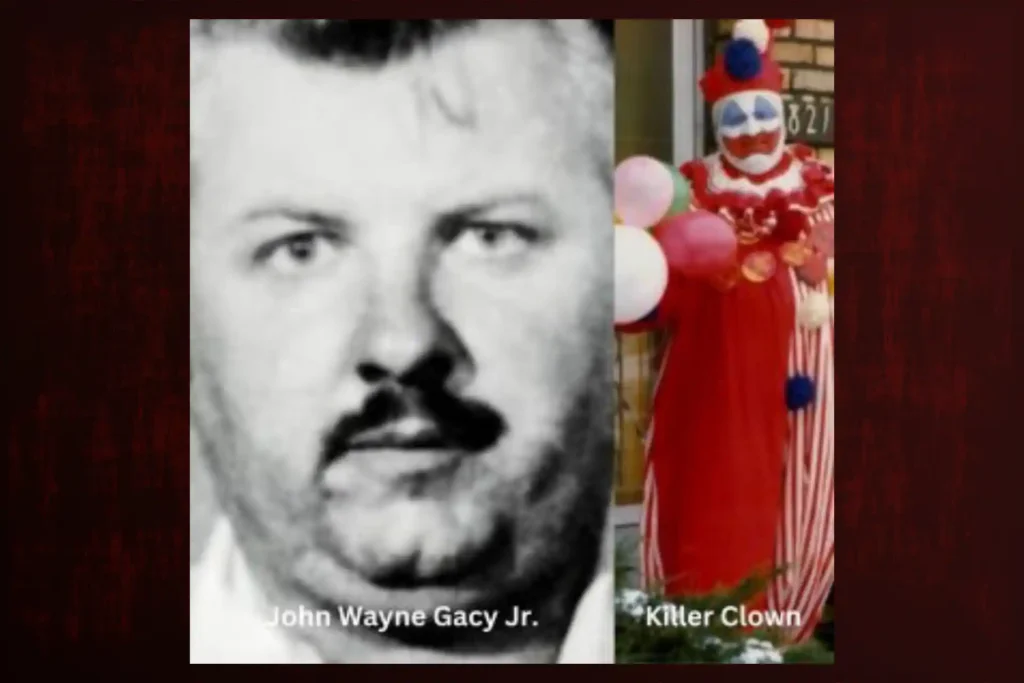
Born in Chicago in 1942, John Wayne Gacy Jr.’s formative years were marred by a tumultuous family life that would cast a long and dark shadow over his future. Marion Elaine Robinson, his mother, endured a tumultuous life with his father, John Stanley Gacy, who was a machinist prone to alcoholism. He was a domineering and abusive figure who subjected young John to a barrage of verbal and physical assaults. These traumatic experiences left an indelible mark on John’s psyche, fostering a deep-seated anger and resentment that would fester and grow over time.
John Wayne Gacy’s childhood was marked by a troubled upbringing, including an abusive father and early struggles that some believe contributed to the dark path he would later take as the infamous “Killer Clown”. Though Brian Peck and John Wayne Gacy were both involved in notorious criminal cases, they were entirely separate individuals, with Gacy’s crimes being far more infamous due to the horrifying scale and nature of his murders as the “Killer Clown.”
In addition to the physical and emotional abuse inflicted by his father, John also grappled with the complexities of his own sexuality. Growing up in a time when homosexuality was widely condemned and stigmatized, he experienced a profound sense of confusion and shame. The internal conflict between his desires and societal expectations created a profound sense of isolation and self-loathing, further contributing to his psychological turmoil.
These early traumas, the physical abuse at the hands of his father and the internal struggle with his sexuality, laid the groundwork for John’s warped worldview and his descent into darkness. The anger and resentment he harbored towards his father and society at large festered within him, gradually morphing into a twisted desire for control and dominance. The emotional scars of his childhood left him with a profound lack of empathy and a distorted sense of morality, paving the way for the horrific acts he would later commit.
John Wayne Gacy’s Double Life: Marlynn Myers, Michael Gacy, & Christine Gacy
John and Marlynn Myers met in the mundane setting of a shoe store in Springfield, Illinois, where they both worked. After a brief courtship, they tied the knot in September 1964, embarking on a seemingly ordinary life together.
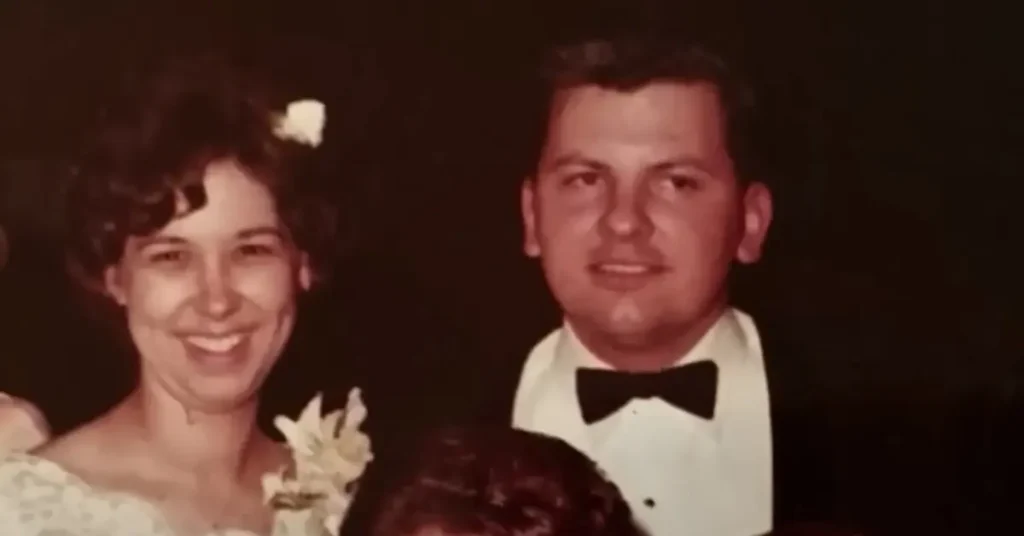
Marlynn’s father acquired three Kentucky Fried Chicken (KFC) franchises in Waterloo, Iowa, and offered John a lucrative management position. He and Marlynn relocated to Waterloo, with the agreement that they would reside in her parents’ former home. His compensation included an annual salary of $15,000, along with a percentage of the restaurants’ profits.
He transformed his basement into an informal recreation area for his employees, featuring a pool table and space for socializing. John hired both male and female teenagers but chose to socialize exclusively with the male employees. He offered them drinks and made unwanted advances. If they rejected him, he would dismiss his behavior as jokes or a test of their character.
His wife gave birth to a son in February 1966, Michael Gacy, and a daughter, Christine Gacy, in March 1967, a period he later described as “perfect.” John felt he had finally earned his father’s approval, which was solidified when his parents visited in July 1966. During that visit, his father offered a private apology for past abuse, and, with a handshake, happily declared, “Son, I was wrong about you.”
John basked in the warmth of his father’s newfound approval, blissfully unaware that this fleeting happiness would soon be eclipsed by a series of dark and devastating events.
Waterloo: John Wayne Gacy’s Jaycee Involvement and “Colonel” Title
In Waterloo, John became actively involved in the local Jaycees chapter, dedicating substantial time to the organization despite already working twelve- to fourteen-hour days managing the KFC restaurants. At meetings, he would often bring fried chicken and insisted on being addressed as “Colonel.”
Despite being seen as ambitious and a braggart, John was highly respected within the Jaycees for his fundraising efforts. In 1967, he was recognized as the “outstanding vice-president” of the Waterloo chapter and served on the board of directors. However, he and members of the organization were actively participating in pornography, drug abuse, swinging, and prostitution.
However, the facade of John’s carefully constructed family life began to crumble when he was arrested and convicted of assaulting a teenage boy. This event marked a turning point in his life, revealing the dark secrets he had been hiding and setting in motion a series of events that would ultimately lead to his downfall.
John’s arrest stemmed from his involvement with the Jaycees, a civic organization for young men. He used his position in the organization to gain access to and manipulate young boys, luring them with promises of work, money, or alcohol. One of his victims, Donald Voorhees Jr., the son of a local politician, came forward with accusations of sexual assault against him.
Despite John’s attempts to deny the accusations and discredit his victim, the evidence against him was overwhelming. He was convicted of sodomy and sentenced to ten years in prison. However, he was released on parole after serving only eighteen months due to good behavior.
The arrest and subsequent conviction marked a turning point in their marriage, as Marlynn was forced to confront the horrifying reality of her husband’s crimes. Despite the shock and betrayal, she took decisive action, filing for divorce on the very day John was sentenced to prison. This courageous decision signaled the end of their tumultuous and ultimately tragic marriage, which was finalized in 1969.
John Wayne Gacy’s Release and Return to Chicago
On June 18, 1970, John was granted parole after serving eighteen months of his ten-year sentence. His parole included a year of probation, a nightly curfew, and the requirement to relocate to Chicago and live with his mother. Upon release, he told his friend Clarence Lane, who picked him up from prison, that he would never return to jail and planned to rebuild his life in Waterloo. However, within a day, John changed his mind and moved to Chicago by bus, where he quickly found work as a short-order cook.
On February 12, 1971, he was accused of assaulting a teenage boy who alleged he had been lured into John’s car at Chicago’s Greyhound bus terminal and then driven to his home, forcing the boy into sex. However, the complaint was dismissed when the boy failed to appear in court.
Subsequently, in June 1971, a young man accused John of sexual assault and impersonating a law enforcement officer, leading to his arrest on charges of aggravated sexual battery and reckless conduct. However, these charges were later dropped due to the accuser’s attempt to blackmail John. The Iowa Board of Parole remained unaware of these incidents and John’s parole concluded in October 1971—shortly after, his criminal records in Iowa were sealed.
Similar Stories:
- Larry Nassar: Olympic Gymnastic Sex Scandal
- The Bloody Legacy Of Bonnie And Clyde
- The Chilling Case of Ben Doberman Serial Killer
- Samuel Little: The Most Prolific Serial Killer in American History
John Wayne Gacy’s Second Failed Marriage to Carole Huff
With his mother’s financial help, John purchased a ranch-style home at 8213 West Summerdale Avenue within the greater Chicago area. Soon after moving in with his mother in August 1971, he rekindled a high school romance and became engaged to Carole Hoff. Carole and her two daughters from a previous marriage joined them in the house shortly after. The couple married on July 1, 1972, and John’s mother moved out shortly before the wedding.
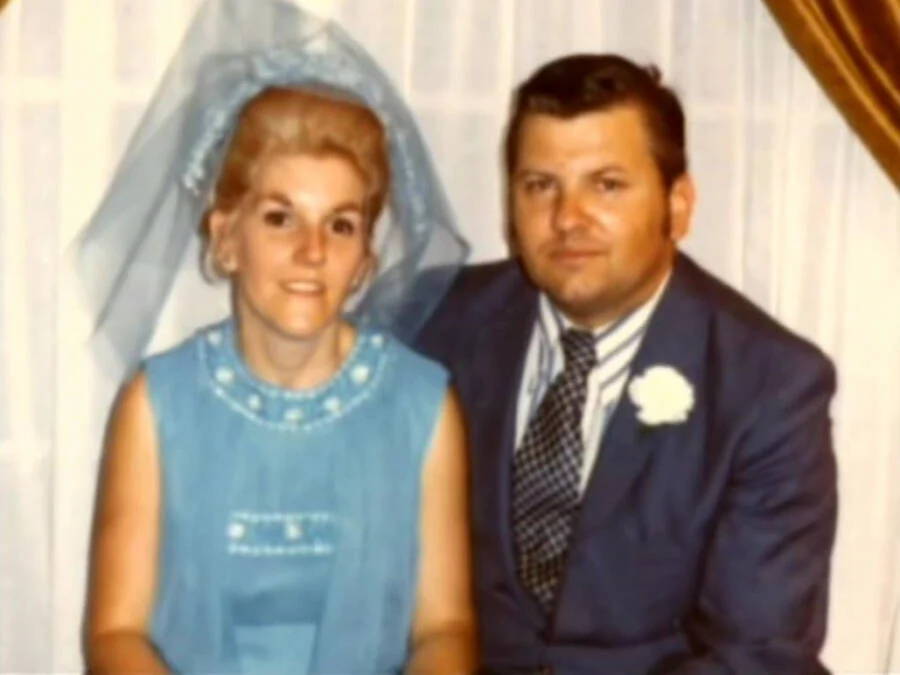
By 1975, he revealed to his wife his bisexuality and after having relations on Mother’s Day, he told her it would be their last time. He began spending most nights away from home, returning in the early hours with excuses of working late or attending business meetings. Carole noticed John bringing teenage boys into the garage late at night and discovered gay pornography, and men’s wallets and IDs in the house.
When confronted, John angrily dismissed her concerns. Following a heated argument in October 1975, Carole requested a divorce, to which he agreed. They continued to live together until February 1976, and their divorce was finalized on March 2nd, based on the false grounds of his infidelity with women.
From Jolly Joker to Killer Clown: The Evolution of John Wayne Gacy’s Sinister Persona
John blended seamlessly into his Summerdale Avenue neighborhood. Regulars at the nearby Good Luck Lounge knew him as a construction worker prone to boasting, providing summer jobs for local teens. For five consecutive summers, he hosted a popular picnic for hundreds of guests. Neighbors, colleagues, and friends all saw him as an ordinary, friendly guy.
John thrived within the social circles of the Moose Club, a fraternal organization where he could network, mingle, and further solidify his image as a respectable member of the community. He actively participated in club events, volunteering his time and resources, all while concealing the sinister secrets lurking beneath his carefully constructed facade. The Moose Club provided John with a platform to connect with influential individuals and maintain a veneer of normalcy, shielding his dark activities from suspicion.
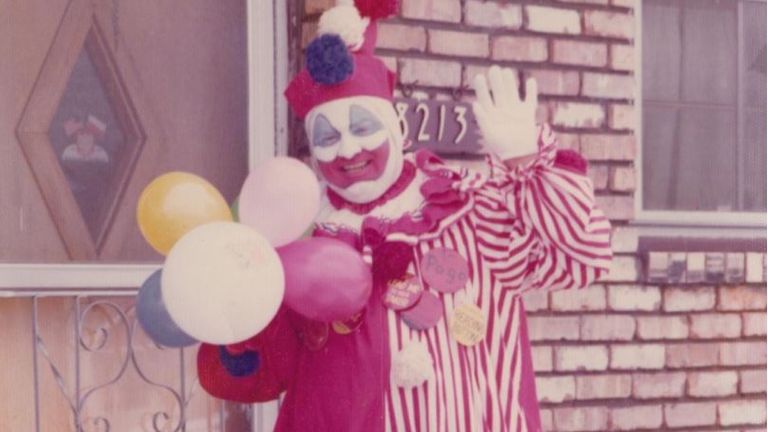
His transformation into “Pogo the Clown” was a gradual process, rooted in his desire for community acceptance and a twisted need for control. John joined a local “Jolly Joker” clown club in the early 1970s, drawn to the idea of bringing joy to others and masking his own inner turmoil. He found that the clown persona allowed him to escape his troubled past and present a cheerful facade to the world.
His involvement in the clown club provided him with a platform to connect with children and families, further solidifying his image as a respectable community member. John would often perform at children’s parties, charity events, and hospital visits, using his clown persona to gain trust and access to potential victims.
However, his motivations for becoming a clown were not entirely altruistic. The clown persona also gave him a sense of power and anonymity, allowing him to indulge in his dark fantasies without raising suspicion. In his own words, he believed that “clowns can get away with murder.”
PDM Contractors: John Wayne Gacy’s Thriving Business and a Disguise for Evil
In 1971, John founded PDM Contractors (Painting, Decorating, and Maintenance), initially as a part-time venture offering home maintenance and painting services. Through hard work and savvy business practices, he grew the company, expanding into interior design, landscaping, and other construction projects. PDM Contractors quickly gained a reputation for reliability and quality work, attracting a steady stream of clients and generating substantial revenue.
By 1978, the company was reportedly earning over $200,000 annually. This success not only bolstered John’s financial standing but also contributed to his image as a respected member of the community, further masking his dark secret life. Ironically, PDM Contractors became a tool for his predatory activities, providing him with access to potential victims under the guise of employment opportunities.
The First Glimpse of Evil: The Murder of Timothy McCoy
In the early morning hours of January 3, 1972, 16-year-old Timothy McCoy, an unsuspecting teenager from Omaha, Nebraska, embarked on a fateful journey. Traveling by Greyhound bus to visit relatives in Chicago over the holidays, Timothy found himself stranded at the terminal after his connecting bus was delayed. Lost and alone in the unfamiliar city, he became easy prey for John.
A seemingly friendly and charismatic figure with a reputation for helping others, he approached Timothy at the terminal as he was known to frequent bus stations and gay bars, often striking up conversations with young men and boys, preying on those who appeared vulnerable or lost. Offering Timothy a warm meal and a place to crash for the night, John lured the unsuspecting teenager back to his house. Timothy, trusting and grateful for the stranger’s kindness, readily agreed.
However, the kindness was a facade. Once inside John’s house, Timothy was overpowered, brutally stabbed in the chest, and ultimately buried in the crawl space beneath the house. It would be years before Timothy’s remains were discovered, his identity finally confirmed through dental records in 1986. This tragic event marked the beginning of John’s killing spree, a period during which he would claim the lives of innocent young men and boys.

The House of Horrors: John Wayne Gacy’s Basement and Its Chilling Significance
The basement of John’s unassuming suburban home in Norwood Park Township, Illinois, became a chilling epicenter of his violent rampage. It was a place where he lured, tortured, and murdered countless young men and boys, turning an ordinary space into a macabre chamber of horrors.
His basement served as a trap, a lure for unsuspecting victims—often inviting young men to his house under the pretense of offering them work, a place to stay, or even just a friendly conversation. Once inside, he would use his charm and manipulative tactics to gain their trust before incapacitating them.
The basement itself was a cramped and dimly lit space, further enhancing the sense of vulnerability and fear experienced by in John’s victims. It was here that he would unleash his sadistic tendencies, subjecting his victims to unspeakable acts of torture and abuse. The walls of the basement bore silent witness to the screams of pain and terror, the muffled pleas for mercy, and the final gasps of life.
After the murders, John would meticulously dispose of the bodies, often burying them in the crawl space beneath his house. Over time, this crawl space became a makeshift graveyard, a grim testament to the scale of his crimes. The basement’s significance lies not only in its role as the site of John’s atrocities but also in its symbolism. It represents the dark underbelly of suburban America, a stark reminder that evil can lurk beneath the surface of seemingly ordinary lives. The basement, once a place of refuge and comfort, became a symbol of horror and depravity, forever associated with the name John Wayne Gacy victims.
A Killer’s Double Life: John Wayne Gacy’s Escalation and Deceptive Charades
The murder of Timothy marked a chilling turning point in John’s life, igniting a dark obsession that would consume him, fueling a terrifying compulsion to kill. This newfound urge manifested in a series of escalating acts of violence, each one more brutal and elaborate than the last. John’s initial act of stabbing Timothy, while horrific, was a relatively quick and impersonal act.
However, as he continued down this dark path, his sadistic tendencies grew more pronounced. He began to take pleasure in inflicting pain and suffering on his victims, prolonging their agony and exerting complete control over their lives and deaths. This progression was evident in the later murders, where John switched to strangulation as his preferred method.
Strangulation allowed him to draw out the dying process, savoring the terror and helplessness in his victims’ eyes as they slowly succumbed to asphyxiation. He would often extend this torture by employing a ligature—a rope, cord, or other object used for constriction—in a slow and deliberate manner. This method not only heightened the victim’s suffering but also provided John with a perverse sense of power and control.
He could manipulate the ligature, loosening and tightening it at will, dictating the pace of his victim’s demise. One strangulation method he used on some of his other victims was a “magician’s trick” with rope or handcuffs. This trick involved John gaining the victim’s trust by seemingly restraining them with rope in a harmless way, only to then use the restraints to subdue them completely.
His sadism wasn’t limited to physical torture as he developed a disturbing fascination with the act of postmortem control, engaging in necrophilia and manipulating the bodies of his deceased victims in various ways. This behavior stemmed from a complex web of psychological factors, including a desire to exert complete dominance over his victims even after death, a warped sense of intimacy, and a morbid curiosity about the human body. In some cases, John would pose his victims’ bodies in sexual positions, further dehumanizing them and fulfilling his twisted fantasies.
He might also dress them in his own clothing or bind them in specific ways, adding a layer of control and ownership to his crimes. These postmortem rituals were not only grotesquely sadistic but also served a practical purpose. By manipulating the bodies, he could potentially delay decomposition and buy himself more time to dispose of them. In some instances, he used lye to accelerate the decomposition process in other parts of the body while preserving skeletal remains, further obscuring evidence and making it more difficult for authorities to identify his victims.
John’s predatory instincts were awakened, and he began to view young men and boys as mere objects to fulfill his twisted desires. No longer were they seen as individuals with lives, dreams, and families; they were simply pawns in his dark game. This objectification allowed him to dehumanize his victims, making it easier for him to commit such heinous acts without guilt or remorse. The thrill of the hunt, the power and control he wielded over his victims, and the perverse satisfaction he derived from their suffering became his primary motivators.
Despite this he led a double life, outwardly remaining remarkably unchanged, continuing to run his successful construction business, expanding his operations and earning a reputation as a hardworking and reliable businessman.
A Brush with Evil: 3 Victims’ Harrowing Encounter with John Wayne Gacy
In the spring of 1977, Michael Rossi, a young construction worker employed by PDM Contractors, was invited to a seemingly innocuous house party hosted by his boss. Unbeknownst to him, he was about to encounter the dark side of the seemingly affable contractor.
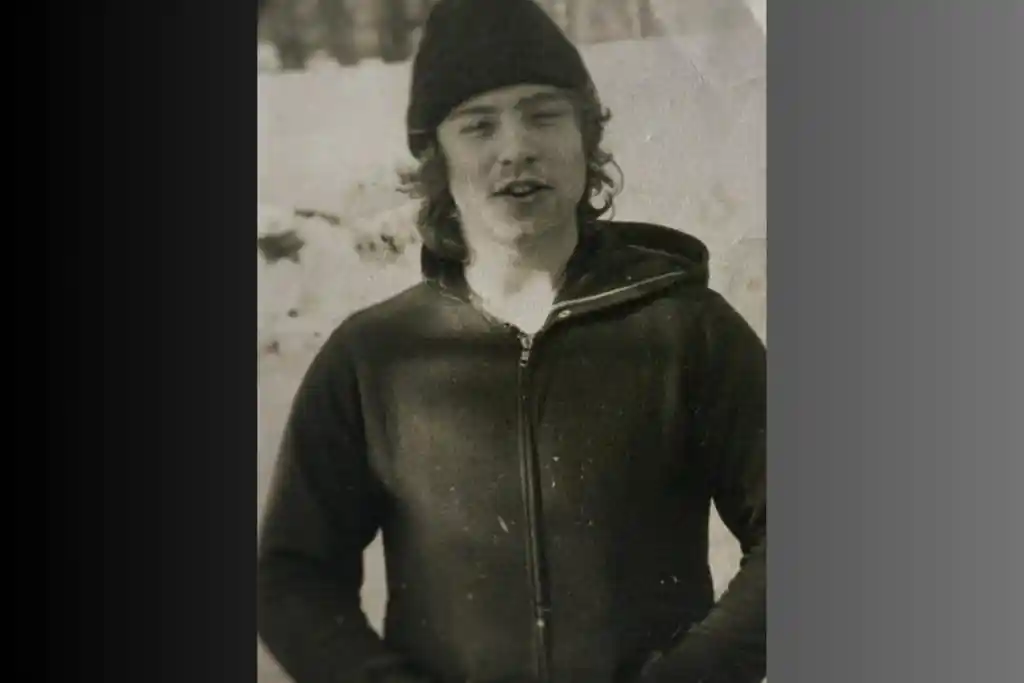
Amidst the revelry, John was known for his charm and gregarious nature and singled out Michael. As the night progressed, John’s demeanor took a chilling turn. Under the pretense of showing Michael a magic trick, John attempted to restrain him, intending to carry out a sexual assault. Michael, however, was not easily subdued, managing to break free from John’s grasp and quickly flee the house, shaken but unharmed.
Despite the terrifying ordeal, he chose not to report the incident immediately, feeling ashamed and embarrassed, blaming himself for putting himself in a vulnerable situation. It wasn’t until John’s arrest later on that Michael came forward with his story, realizing the full extent of John’s predatory nature.
Then on March 21, 1978, Jeffrey Rignall, a 26-year-old Chicago resident, was walking towards a gay bar when a seemingly friendly John offered him a ride and a joint in his car. Jeffrey accepted, unaware of the horrors that awaited him. Inside the car, John subdued Jeffrey with chloroform, a powerful anesthetic. He then drove Jeffrey to his house, where he subjected him to repeated rapes, beatings, and burns with cigarettes—even showed him a photo album of his previous victims.

Despite the brutality of the attack, Jeffrey managed to regain consciousness and momentarily fight back. Taking advantage of a brief lapse in John’s attention, he managed to escape the house, fleeing into the cold night, disoriented and severely injured. He reported the assault to the police, providing a detailed description of his attacker and the location of the house. However, due to the prevailing homophobic attitudes of the time and the lack of evidence, the police did not take his claims seriously. Frustrated and determined to find his attacker, Jeffrey launched his own investigation, eventually identifying John as the culprit.
Jeffrey’s relentless pursuit of justice, despite the lack of support from authorities, ultimately played a crucial role in John’s downfall. However, the trauma of the attack haunted him for the rest of his life, leading to struggles with substance abuse and mental health issues. He documented his experiences in the book “29 Below,” a chilling account of his survival and his fight for justice.
Finally, in the summer of 1978, a young runaway named David Daniel crossed paths with John, desperate for work. John offered him a position at PDM Contractors, but unbeknownst to David, he had unwittingly stepped into the lair of a predator.
One fateful night, under the guise of camaraderie, John invited David to his Norwood Park home. The evening took a sinister turn when John attempted to overpower and sexually assault the teenager. In a desperate struggle for survival, David fought back with unexpected ferocity, managing to break free from John’s grasp and escape the house.
Despite the trauma he endured, he found the courage to report the incident to the authorities. His detailed account of the assault and his harrowing escape proved to be a crucial piece of the puzzle in the investigation against John.
Additional “Serial Killers” Stories:
- Todd Kohlhepp: The South Carolina Serial Killer and Real Estate Agent
- Aileen Wuornos: ‘Damsel of Death’ Serial Killer
- Cleveland Torso Murderer: Infamous Serial Killer
- Jeffrey Dahmer: The Milwaukee Cannibal
The Fateful Encounter: Robert Piest’s Tragic Visit to John’s House
On the evening of December 11, 1978, 15-year-old Robert Piest was working his after-school shift at a local pharmacy in Des Plaines, Illinois. As he was closing up, John posed as a contractor, approaching Robert with an offer for a well-paying summer job with PDM Contractors. Robert was a bright and ambitious young man who was intrigued by the opportunity and told his mother he would be back soon after discussing the job with John.
Tragically, Robert would never return. Lured by the promise of employment, he accompanied John to his nearby home, unaware of the horrors that awaited him. Once inside, John’s predatory instincts took over, using his charm and charisma he’d honed over years of social interaction, to disarm Robert and make him feel comfortable. John offered Robert a drink and showed him pictures of past construction projects to further lull him into a false sense of security. However, this facade of friendliness was a thin veil masking John’s monstrous intent.
Using a ruse, John asked Robert to help him move something heavy to get the teenager close. Quickly and unexpectedly, he overpowered Robert as he was a large and powerful man, and the teenager was small, having little chance of resisting. Once subdued, John subjected him to a horrifying ordeal, torturing and killing him—meticulously disposing of the teenager’s body. He wrapped Robert in plastic, bound him with rope, and stored his body in his attic for several days before eventually dumping it in the Des Plaines River. This act of concealment was not unusual for John, as he had previously used the crawl space beneath his house as a makeshift graveyard for many of his victims.

A Missing Teenager and a Suspicious Contractor: The Investigation That Exposed Gacy’s Crimes
The disappearance of Robert, however, set in motion a series of events that would ultimately lead to John’s downfall. Robert’s mother, concerned about her son’s prolonged absence, reported him missing to the police. The investigation quickly focused on John, who had been the last person seen with Robert at the pharmacy.
The pharmacy’s security cameras captured footage of Robert talking to John, and witnesses confirmed that Robert had mentioned a job offer from a contractor. This evidence, along with John’s evasive behavior and contradictory statements, raised suspicions among investigators.
Unmasking a Monster: The Search Warrant, Media Frenzy, and Gacy’s Arrest
The search warrant obtained for John’s house in December 1978 was a turning point in the investigation of Robert’s disappearance—authorizing a thorough search of John’s property, including his house, garage, and the surrounding grounds. This warrant, based on the accumulating evidence against him and his suspicious behavior, granted investigators the legal authority to uncover the gruesome secrets hidden within the seemingly ordinary suburban home.
As news of the search warrant spread, a media frenzy erupted. Reporters and camera crews descended upon John’s neighborhood, eager to capture every detail of the unfolding investigation. The public’s fascination with the case grew with each passing day, as the search for Robert and the potential discovery of other victims dominated headlines and newscasts.
The intense media scrutiny intensified the pressure on investigators, who worked tirelessly to uncover the truth. The search of John’s property yielded a trove of disturbing evidence, including the discovery of a nightmarish scene in the crawl space beneath his house. The cramped and dimly lit space was no longer a place for storage or laundry; it had been transformed into a makeshift graveyard.
The stench of death hung heavy in the air as investigators meticulously excavated the crawl space, unearthing the decomposed remains of multiple victims. Each discovery sent shockwaves through the community and the nation, shattering the illusion of John, the respected businessman and friendly neighbor, and revealing him as a prime suspect in a series of horrific murders.
On December 21, 1978, after days of intense investigation and mounting evidence, John was arrested and charged with the murder of Robert. His arrest marked the culmination of a complex and emotionally charged investigation, bringing a sense of relief to the community and a glimmer of hope for justice for the victims and their families.
The Unraveling of a Lie: John’s Contradictory Statements and Mounting Suspicions
The subsequent discovery of Robert’s belongings in John’s home, including a high school ring, further solidified John’s status as a suspect. When police questioned him about the ring, he claimed that Robert had given it to him as payment for marijuana, a story that investigators found implausible as Robert was known to be a responsible and law-abiding young man.
As the investigation intensified, John’s carefully constructed facade began to crumble as his lies and inconsistencies unraveled, and his dark secrets were slowly brought to light. The search of his property revealed the horrifying extent of his crimes, uncovering a house of horrors that would forever change the landscape of American true crime.
When law enforcement initially questioned John about Robert’s disappearance, he vehemently denied any knowledge of the teenager. He claimed to have never met Robert and feigned ignorance about the circumstances surrounding his vanishing. However, as the investigation progressed and the evidence against John began to mount, his story began to unravel, revealing a web of inconsistencies and contradictions.
His initial denial of knowing Robert was quickly contradicted by the pharmacy’s security camera footage, which clearly showed him interacting with the teenager. Confronted with this evidence, John changed his story, claiming that Robert had indeed come to his house to discuss a potential job opportunity but had left shortly after.
This revised narrative, however, raised further questions and inconsistencies. His account of the encounter was vague and lacked details, and his demeanor during the interrogation was evasive and defensive. His responses were often rambling and disjointed, raising suspicions that he was withholding information or fabricating a story to protect himself.
Moreover, John’s overall behavior raised red flags for investigators as he seemed overly eager to please and ingratiate himself with the police, offering unsolicited information and assistance in the investigation. This eagerness, combined with his shifting narratives and nervous demeanor, created a growing sense of unease among the officers.
The Fall of the Killer Clown: John Wayne Gacy’s Charges and Trial
John ultimately confessed to murdering numerous young men and boys, leading investigators to uncover the remains of 29 victims buried beneath his house. This chilling discovery shocked the nation and transformed John from a seemingly respectable citizen into a notorious serial killer.
He was indicted on 33 counts of murder, one of the largest mass murder indictments in U.S. history. The trial, which took place in 1980, was a media sensation, captivating the nation with its gruesome details and the shocking revelations about John’s double life.
The prosecution presented overwhelming evidence against him, including his confession, the bodies found in his crawl space, and the testimony of surviving victims who had managed to escape his clutches. John’s defense team attempted to portray him as insane, arguing that he was not in control of his actions during the murders.
However, the jury ultimately rejected the insanity plea, finding John guilty on all 33 counts of murder. He was sentenced to death for 12 of the murders that occurred after Illinois reinstated the death penalty in 1977.
John Wayne Gacy Last Meal: A Final Indulgence
Before his execution in 1994 clown killer john wayne gacy requested a last meal that reflected his past and personal preferences. It consisted of a bucket of Kentucky Fried Chicken, a fitting choice considering his previous ownership of KFC franchises. He also asked for twelve fried shrimp, a pound of strawberries, a basket of French fries, and a Diet Coke.
He spent 14 years on death row before his execution by lethal injection in 1994. His case remains one of the most infamous in American history, a chilling reminder of the darkness that can lurk beneath the surface of seemingly ordinary individuals.
The Legacy of John Wayne Gacy
John Wayne Gacy’s crimes left an indelible mark on the families of his victims and the community at large. The image of the clown, once a symbol of joy and laughter, was forever tainted by John’s actions. His case led to increased scrutiny of individuals who work with children, with many organizations implementing stricter background checks and safety protocols.
The case is a stark reminder of the vulnerability of youth and the dangers of trusting strangers. Timothy McCoy’s tragic fate highlighted the challenges law enforcement faced in identifying and apprehending serial killers, especially during a time when communication and information sharing between agencies were limited. The case also raised awareness about the issue of missing persons and the need for better communication and coordination between law enforcement agencies.
Being a victim of extreme child abuse and neglect, John’s story serves as a chilling reminder of the devastating impact of childhood trauma and the importance of providing support and understanding to those who struggle with their identity and mental health.
The Disturbing Legacy of John Wayne Gacy Paintings
John Wayne Gacy expressed himself through art, creating hundreds of paintings during his time on death row. These paintings, often depicting clowns, skulls, and other macabre figures, have become a subject of fascination and controversy:
- Window into the mind of a killer: John’s artwork provides a chilling glimpse into his psyche, filled with dark imagery and disturbing themes. Some experts believe his paintings offer clues about his motivations and fantasies.
- Controversy and debate: The art raises ethical questions about profiting from the work of a murderer. Some argue that the paintings should be destroyed, while others see them as historical artifacts with potential value for psychological study.
- Macabre fascination: John’s notoriety as a killer has fueled a morbid curiosity in his art. Collectors and true crime enthusiasts have sought out his paintings, often paying high prices for them.
After John’s execution in 1994, his artwork was scattered. Some paintings were purchased by private collectors, while others were acquired by museums or galleries specializing in outsider art. A few were even burned in a cathartic gesture by the families of his victims.
Unsettling Connection: Brian Peck – John Wayne Gacy
Brian Peck, a former actor and Nickelodeon dialogue coach, was arrested in 2003 and charged with 11 counts, including lewd conduct with a minor. These charges stemmed from allegations of sexual abuse made by Drake Bell, who worked with Peck on The Amanda Show. Peck ultimately pleaded no contest to two charges: oral copulation with a minor under 16 and performing a lewd act with a 14- or 15-year-old.
Brian harbored a disturbing secret: he maintained a pen pal relationship with infamous serial killer John Wayne Gacy. This unsettling connection came to light in the ID docuseries, “Quiet on Set: The Dark Side of Kids TV,” which revealed that Peck possessed letters and a signed self-portrait from Gacy, kept in his nightstand. This revelation raised questions about Brian’s character and judgment, especially considering his work with child actors. While the extent of their relationship remains unclear, this association casts a sinister shadow over Brian’s career and raises concerns about the potential dangers lurking behind seemingly harmless facades.
Books and Documentaries John Wayne Gacy
Watch “John Wayne Gacy Jr. Documentary”

John Wayne Gacy Jr. carefully crafted a public persona of respectability as a family man and successful businessman, even earning the privilege of meeting First Lady Rosalyn Carter. However, this facade masked a horrific truth: beneath the clown makeup he wore for community events, Gacy was a monstrous predator responsible for the brutal murders of over thirty young men.
Watch “The Clown & The Candyman”
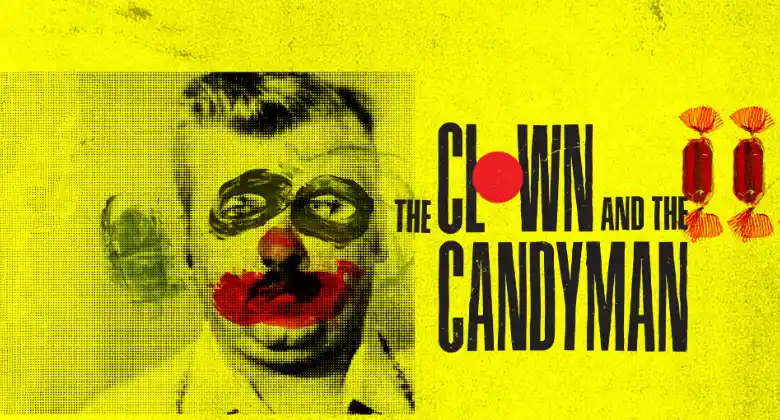
Serial killers Dean Corll and John Wayne Gacy’s links to an elaborate nationwide pedophile trafficking ring are revealed for the first time – a network that included prominent members of society with tentacles in some of our most trusted organizations.
Read “Killer Clown: The John Wayne Gacy Murders”

“Killer Clown” is the definitive account of the John Wayne Gacy case, penned by Terry Sullivan, the prosecutor who led the investigation, arrest, and conviction of one of America’s most notorious serial killers. Now available in trade paperback for the first time, this edition features a new foreword by #1 New York Times bestselling author Gregg Olsen. Fans of true crime documentaries like “Conversations with a Killer” will gain chilling insights into the mind of a murderer who deceived an entire community.
Read “29 Below”

In a horrifying encounter, Jeff Rignall was chloroformed and brutally assaulted by a stranger in a black sedan. Facing police indifference, he spent four months investigating, ultimately uncovering John Wayne Gacy as his attacker. This is the story of Rignall’s ordeal, his relentless pursuit of justice, and the profound impact the attack had on his life.
Read “Bad Clowns”

Bad Clowns: they’re not just for laughs anymore. This book delves into the history of malevolent clowns, from infamous figures like the Joker and Pennywise to lesser-known stories of Bozo’s obscenities and phantom-clown abductors. Discover why clowns go bad, why they terrify us, and the bizarre antics of these twisted entertainers. “Bad Clowns” is a fascinating blend of humor, research, and cultural analysis, revealing the dark side of the clown’s grin.
FAQs
Why was John Wayne Gacy called the “Killer Clown”?
John Wayne Gacy was called the “Killer Clown” because he performed as a clown named “Pogo” at children’s parties and community events, all while secretly committing a series of brutal murders.
How did John Wayne Gacy’s clown persona relate to his crimes?
Gacy’s clown persona, “Pogo the Clown,” symbolized his ability to mask his true nature. While he entertained as a clown, he was leading a double life, committing heinous crimes that shocked the world.
What happened to John Wayne Gacy after his arrest?
After his arrest in 1978, John Wayne Gacy was convicted of 33 murders and sentenced to death. He was executed by lethal injection on May 10, 1994.
was john wayne gay?
Yes, John Wayne Gacy was attracted to men. His sexual orientation played a role in his crimes, as many of his victims were young men and boys.